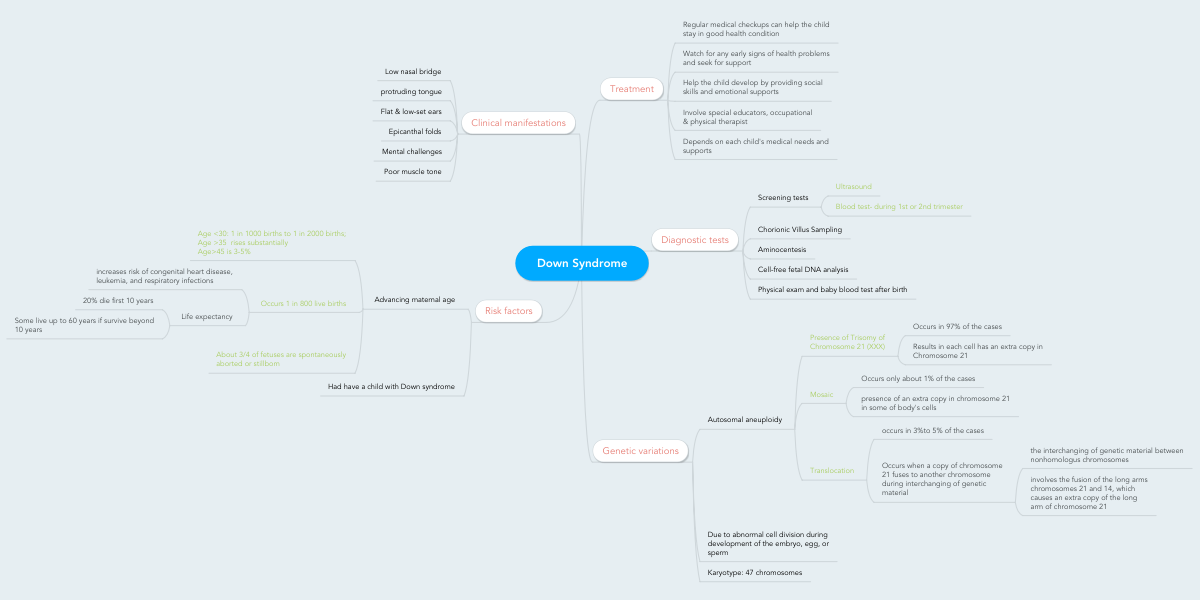The Impacts of Down Syndrome
Children born with Down syndrome have an additional chromosome that alters how their brains and bodies develop throughout time. Consequently, those born with Trisomy 21 syndrome encounter various psychiatric difficulties (Söylemez, 2022). Observing their physical and facial characteristics makes it easy to identify them. Extra duplicates of genes are thought to cause several physiological and developmental disorders. To see which parts of the body this condition affects, check out the list below.
Heart
Many people with this condition have a congenital cardiac abnormality. Abnormalities of the atrial and ventricular membrane and valves result from an endocardial neoprene development problem. As a result, blood builds up in the heart muscles, making pumping more difficult.
Ears
Face morphology and upper nasal mucosa infections are the primary causes of chronic ear problems in newborns with Down syndrome. One-half of all Down syndrome newborns are born with stenotic earholes (Kreicher et al., 2018). As a result, it is more difficult to pinpoint the source of middle ear problems. When there are issues in the respiratory system, the eardrum becomes inflamed and bloated.
Eyes
It is prevalent for this genetic mutation to cause vision difficulties at birth. These are a few examples: Conjunctivitis and other eye diseases, vision loss, and glaucoma are all examples of refractive errors (Söylemez, 2022).
Trisomy 21 Concept Map

Effect on Other Body Systems
The baby’s chance of having several medical issues is raised because of the presence of Down syndrome. Signs include an overflow of stomach acids into the throat, known as atrophic gastritis, and celiac disease, sensitivity to wheat protein. Furthermore, the two-year chances of developing auditory and visual issues are significantly raised. Leukemia of blood-forming lymphocytes has a fair chance of developing in this youngster. Developmental delays and behavioral issues in youngsters with Down syndrome are common (“Trisomy 21 mosaicism”, 2020). People with Down syndrome deficiency are more likely to have developmental delays, such as growth retardation and delayed speech/language acquisition, than infants without the disorder. Attention deficit disorder, monomaniacal disorder, and temper tantrums are all examples of behavioral difficulties. Developmental situations known as autism spectrum disorders (ASDs) impair communication and interpersonal interactions in some individuals with Down syndrome (“Trisomy 21 mosaicism”, 2020).
In many cases, health problems that are sometimes apparent at birth or take time to develop affect persons with Down syndrome. Antipsychotics or other treatments may be able to alleviate these symptoms (“Trisomy 21 mosaicism”, 2020). Down syndrome is associated with a wide range of diseases, including but not limited to:
- Problems with the heart, which are often apparent at birth
- Thyroid abnormalities
- Visual and hearing impairments
- Obstructive nocturnal hypopnea
- Diarrhoea and other digestive issues such as constipation, gastric reflux illness, and gluten intolerance (wheat protein sensitivity)
- Aspects of autism include a lack of social skills, difficulty communicating, and repetitive conduct.
References
Gary B., M. (2017). Special legal problems in the protection of handicapped children from parental maltreatment.Special Children—Special Risks, 179–194. Web.
Hodapp, R. M., & Casale, E. G. (2020). Parenting the child with Down Syndrome: Understanding—but going beyond—the “Down syndrome advantage.”The Oxford Handbook of Down Syndrome and Development. Web.
Kreicher, K. L., Weir, F. W., Nguyen, S. A., & Meyer, T. A. (2018). Characteristics and progression of hearing loss in children with Down syndrome. The Journal of pediatrics, 193, 27-33.
Söylemez, F. (2022). Phenotypes associated with down syndrome and causative genes.Down Syndrome and Other Chromosome Abnormalities [Working Title]. Web.
Trisomy 21 mosaicism. (2020). Definitions. Web.